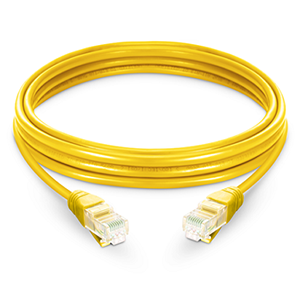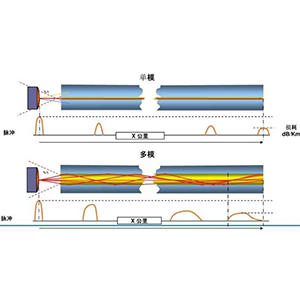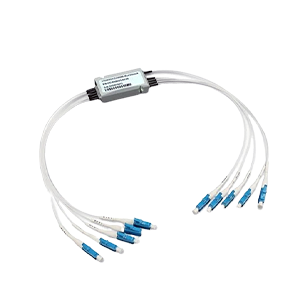Routers play a key role in the network. This article will focus on the WAN (Wide Area Network) port on the router. We will first define the role and working principle of the router and explain its important position in the network. Next, we will list the common port types of routers and briefly describe the basic functions of each type of port.
Then, we will define the characteristics of the WAN port and explain its role in the router. After that, we will explain how the WAN port connects to the WAN and explain its data transmission process. Finally, we will introduce the common configuration parameters of the WAN port and emphasize the importance of setting up the WAN port properly.
Basic functions of routers
The basic functions of a router include connecting multiple networks, forwarding data packets, managing network traffic, and assigning IP addresses. It is responsible for transferring data between different networks, ensuring effective communication between devices, and providing network security functions such as firewalls and access control.
The role and working principle of a router:
A router is a key device used to connect and forward data flows between different networks. It mainly has the following basic functions:
(1) Data forwarding:
- The router forwards the data packet from the input port to the appropriate output port according to the destination address of the data packet.
- The decision of data forwarding is made by searching the routing table.
(2) Network interconnection:
- The router can interconnect different types of networks (such as LAN, WAN) to realize data communication between heterogeneous networks.
- The router acts as a “bridge” between networks.
(3) Routing algorithm:
- The router uses various dynamic routing protocols (such as RIP, OSPF, BGP) to calculate the optimal path.
- The routing table is dynamically updated and maintained according to the routing algorithm to ensure that data is transmitted along the optimal path.
(4) Network Address Translation (NAT):
- The router can perform NAT function to achieve address conversion between internal private network and public network.
- Solve the problem of insufficient IPv4 address space.
The important position of routers in the network:
The router plays a vital role in modern networks, which is mainly reflected in the following aspects:
(1) Connecting different networks:
- The router interconnects LAN, WAN, Internet and other networks to achieve end-to-end data communication.
- It is a key device to achieve network interconnection.
(2) Providing network security:
- The router can filter and isolate network traffic by configuring functions such as access control lists (ACLs).
- Effectively protect the internal network from external threats.
(3) Optimize network performance:
- The router’s routing algorithm and forwarding mechanism can select the best transmission path based on the network topology and traffic conditions.
- Improve the transmission efficiency and reliability of the network.
(4) Support network management:
- The router can provide monitoring and configuration interfaces for network administrators through protocols such as SNMP and Telnet.
- It helps to grasp the network status in real time and centrally manage it.
In short, as a key component in the network infrastructure, the router plays an irreplaceable and important role in achieving network interconnection, ensuring network security, optimizing network performance, and supporting network management.
Introduction to Router Port Types
Router port types include Ethernet ports (for wired network connections), WAN ports (for Internet connections), and USB ports (for sharing printers or storage devices). These ports support different network connections and device expansions to meet various network needs.
- LAN Port:
- Used to connect computers, switches and other devices on a local area network (LAN).
- Generally uses RJ-45 Ethernet interface, supporting various Ethernet transmission standards.
- Provides interconnection and data exchange functions between internal network devices.
- WAN Port:
- Used to connect to external networks such as a wide area network (WAN) or the Internet.
- Different types of interfaces may be used, such as WAN cable, xDSL, fiber, etc.
- Responsible for connecting to the external network and realizing data transmission with the internal network.
- Console/Management Port:
- Used to manage and configure the router locally through a terminal or PC.
- Usually uses a serial interface (RS-232) or USB interface.
- Provides a direct access channel for administrators to the router.
- Power Port:
- Used to connect to the power supply of the router.
- Ensure that the router device can be powered and operate normally.
- Wireless Network Port (Optional):
- Some routers will integrate wireless network functions.
- Provide wireless LAN (WLAN) access services through the wireless port.
- Expands the connection range and flexibility of the router.
These different types of ports work together to form the network connection and management functions of the router:
- LAN port is responsible for internal network interconnection.
- WAN port realizes external network connection.
- Management port provides local access to the router.
- Power port ensures normal power supply of the device.
- Wireless port expands network coverage.
By using these port resources reasonably, the router can efficiently complete key functions such as network interconnection, data forwarding, management and maintenance.
The role of WAN port
The WAN port is used to connect the router to the external network or Internet service provider. It accesses the wide area network through this port, allowing the router to connect the internal network with the external network to achieve data transmission and Internet access.
Features of WAN port:
WAN port is a dedicated port on the router for connecting to the Wide Area Network (WAN). It has the following main features:
(1) Connecting broadband modems:
- WAN port is generally used to connect broadband modems, such as DSL modems, cable modems, etc.
- Through these devices, physical connection with the WAN or the Internet is achieved.
(2) Providing WAN access capabilities:
- WAN port can connect internal networks (such as LAN) to WAN or the Internet.
- Provide internal users with access to WAN resources and Internet services.
The role of WAN port in router:
WAN port plays a key role in router, and its main role is reflected in the following two aspects:
(1) Connecting to WAN and realizing WAN communication:
- WAN port is an important interface for router to connect to WAN.
- Through WAN port, router can interconnect internal network with WAN.
- Realize data transmission and information exchange within WAN.
(2) Ensure that router can access the Internet:
- For routers connected to the Internet, WAN port is an important entrance to access the Internet.
- Through WAN port, router can obtain various resources and services from the Internet.
- Ensure that internal users can access the Internet smoothly.
In short, the WAN port is the key interface for the router to connect to the WAN and the Internet. It ensures that the router can effectively integrate the internal network with the WAN and provide users with key functions such as WAN communication and Internet access. The WAN port plays an indispensable and important role in modern networks.
How the WAN port works
The WAN port connects the router to the Internet service provider and introduces external network signals into the internal network. It receives data from the ISP and forwards it to the devices in the LAN to achieve Internet access and data communication.
How the WAN port connects to the WAN:
The WAN port can be connected to the WAN or the Internet in a variety of ways, mainly including:
(1) Wired access method:
- Connect to the WAN through a wired network interface such as cable or optical fiber.
- Common wired access methods include DSL, cable, T1/E1 dedicated lines, etc.
(2) Wireless access method:
- Use wireless network technology (such as 4G/5G cellular network) to connect to the WAN.
- Provide WAN access capabilities for mobile devices.
Whether wired or wireless, the WAN port needs to use a dedicated line or public IP address to access the WAN. These IP addresses are assigned by the WAN service provider.
Data transmission process of the WAN port:
When the LAN device sends data to the WAN port, the data transmission process is as follows:
(1) LAN device sends data to the WAN port:
- The LAN device sends the data packet to the WAN port of the router.
(2) WAN port data forwarding:
- After the WAN port of the router receives the data packet, it searches the routing table according to the destination address.
- The data packet is forwarded to the WAN and finally sent to the destination.
(3) WAN data transmission:
- The data packet is transmitted and routed within the WAN until it reaches the final destination.
- The WAN completes data transmission based on its own routing algorithm and forwarding mechanism.
Through this process, LAN devices can access and utilize various resources and services on the WAN and even the Internet through the WAN port of the router. The WAN port plays a key role in connecting the internal network and the external network.
In short, the WAN port can connect the router to the WAN via wired or wireless means, and is responsible for forwarding the data packets sent by the LAN device to the WAN, realizing the interconnection between the internal and external networks. The WAN port plays an indispensable and important role in the router.
Common configuration of WAN port
Common configuration of WAN port includes setting IP address (static or dynamic), configuring subnet mask and gateway address, and setting DNS server. According to the requirements provided by the ISP, VLAN, PPPoE or other specific protocols may also need to be configured.
Common configuration parameters of WAN port
- Connection type:
- Wired connection: You can choose wired access methods such as DSL, Ethernet, and fiber.
- Wireless connection: You can choose wireless network access such as 4G/5G.
- IP address allocation:
- Dynamic IP address: Automatically allocated by the service provider, no manual configuration required.
- Static IP address: Manually set a fixed public IP address.
- Bandwidth rate:
- Configure the corresponding upstream and downstream bandwidth rates according to the broadband service package ordered.
- Ensure that the internal network devices can fully utilize the available network bandwidth.
- Other parameters:
- Subnet mask, default gateway, DNS server and other basic network parameters.
- Make reasonable configuration according to the actual deployment environment.
How to properly configure WAN port parameters
- Ensure network connectivity:
- Properly setting WAN port parameters can ensure that the router can successfully access the WAN or the Internet.
- Avoid network interruption due to incorrect parameter configuration.
- Optimize networkPerformance:
- Reasonably set the bandwidth rate to maximize the transmission capacity of the WAN.
- Improve the Internet experience of internal network users.
- Meet application requirements:
- Choose the appropriate WAN connection method and IP allocation mode according to the needs of different business scenarios.
- Ensure that the network can meet the functional and performance requirements of various applications.
- Improve network security:
- Reasonably configure WAN port parameters to help strengthen the security protection of network boundaries.
- Reduce the risk of external attacks.
In short, correctly configuring WAN port parameters is the key to ensuring that the router can normally access the WAN, improve network performance, and enhance network security. Reasonable WAN port configuration is crucial for the stable operation of the entire network system.
Summary
Reasonable configuration of the router’s WAN port is crucial for network communication. Our company has long focused on the research and development and application of network equipment and has rich practical experience. We provide high-performance, feature-rich router products that are widely used in enterprise, home, and small and medium-sized network scenarios.
Our routers use industry-leading technical solutions and have achieved excellent levels in key indicators such as bandwidth, security, and stability. At the same time, our team of engineers will provide you with professional consulting and configuration services to ensure that your WAN port settings can meet actual needs to the greatest extent. Contact us now to learn more. We will do our best to provide you with high-quality network solutions.
WAN Port On Router FAQ
The WAN (Wide Area Network) port on a router is a port used to connect the router to an external network, such as the internet or a service provider’s network. It provides the link between the local network and the wider internet.
The WAN port connects the router to external networks like the internet, while LAN (Local Area Network) ports connect internal devices, such as computers and printers, within the local network. LAN ports are used for internal communication, whereas the WAN port handles external connections.
The WAN port typically uses an Ethernet cable (Cat5e, Cat6, or Cat6a) to connect to a modem, network switch, or other network devices provided by an ISP (Internet Service Provider).
No, the WAN port is specifically designed for connecting to an external network or modem. For connecting additional devices, use the LAN ports on the router.
Most routers designed for home and small business use have a WAN port. However, some specialized routers, such as those used solely for internal networking or in certain types of mesh networks, might not have a dedicated WAN port.
If the WAN port is not working, ensure that the Ethernet cable is securely connected and check if the modem or external network device is functioning properly. Restarting the router and modem can also help. If problems persist, contact your ISP for assistance.
A single WAN port typically supports one external connection. To manage multiple external connections, you would need additional equipment such as a network switch or router with multiple WAN ports.
The WAN port’s performance affects the speed and stability of the internet connection for the entire network. The quality of the connection to the WAN port determines the overall internet performance experienced by devices connected to the router.
Settings for the WAN port can include IP address configuration (dynamic or static), DNS settings, and sometimes advanced options such as VLAN tagging or PPPoE (Point-to-Point Protocol over Ethernet) configuration, depending on the ISP requirements.
The WAN port is generally compatible with most types of internet services, such as DSL, cable, fiber, and satellite. However, the specific configuration settings may vary depending on the ISP and the type of internet service.




